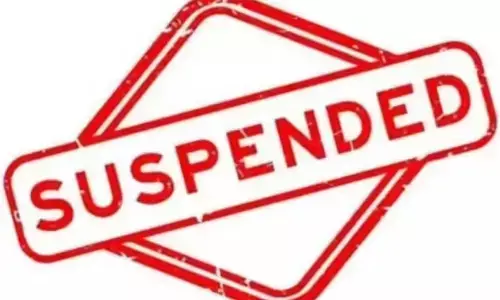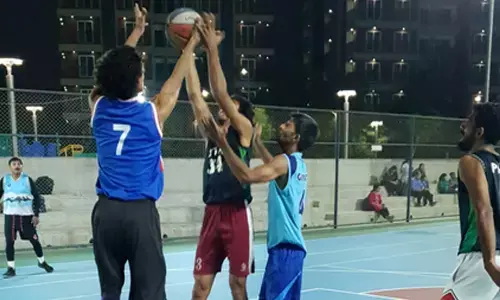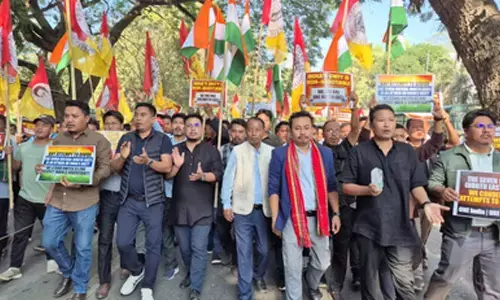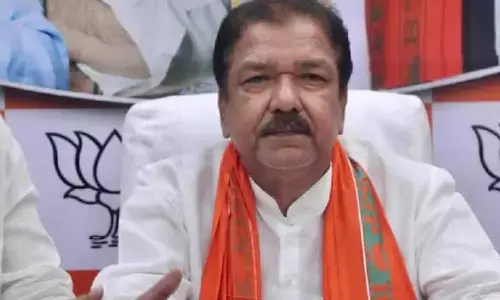Obama Moment for AP?

Barack Obama Moment For AP. Come Republic Day in January, US President Barack Obama will be attending the celebrations as the chief guest. Chief Minister Nara Chandrababu Naidu is trying to make this “Obama Moment” also fruitful and memorable for Andhra Pradesh.
Come Republic Day in January, US President Barack Obama will be attending the celebrations as the chief guest. Chief Minister Nara Chandrababu Naidu is trying to make this “Obama Moment” also fruitful and memorable for Andhra Pradesh.
Naidu’s office is seeking a meeting with Obama and his entourage. Easily one of the more capable Chief Ministers, even if a little less articulate when it comes to projecting at the national level, Naidu has done it before. He had wowed the then US President Bill Clinton in 2000. The visitor was impressed with the work done to promote information technology (IT) and to expand the industrial base in and around Hyderabad.
.jpg)
If the meeting with Obama comes about, it will help in consolidating AP as a leading state of the nation. That Naidu’s Telugu Desam Party (TDP) is an important constituent of the National Democratic Alliance (NDA) that rules at the Centre helps immensely.
Besides attracting American investment to AP, there could be a specific gain. Washington and New Delhi will be signing an agreement on the US developing three smart cities in India. Visakhapatnam is one of them. Naidu could also brief the American visitors on the progress made at Kovvada Nuclear Power Project in Srikakulam which is being developed with technical know-how from the US.
Obama’s acceptance of the invitation, a carefully planned move by both sides that is being taken note of in world capitals, signals that the Indo-US ties have come in full play, notably, just a year after the angry spat over what India considered was illegal detention of its diplomat Devyani Khobragade, in violation of international diplomatic norms.
Another thing bears repeating. Prime Minister Narendra Modi, who has staged this diplomatic coup, thinking “out of the box”, was denied visa by the US till some months back for the 2002 communal violence under his watch in Gujarat. That makes the fruit of Modi’s diplomatic triumph taste sweeter.
This is India’s way of honouring Obama. He will witness what is arguably the most theatrical parade in the world that displays a mix of rich culture and military might. The chief guest slot is by far the most prestigious invitation India can extend to a foreign leader. The impact will last even if Americans elect a Republican president.
Being the chief guest at Republic Day or Independence Day celebrations has significance that goes beyond the ceremonial grandeur. It denotes close proximity in relations between the host nation and the guest. Much preparation goes into deciding and inviting a leader to the Republic Day celebrations.
Queen Elizabeth came in 1961. Lord Louis Mountbatten was there in 1964, a close friend of Jawaharlal Nehru. Nehru was keeping unwell. Nehru died three months later. Another Nehru friend, Indonesia’s Soekarno, (who later turned a foe) was followed five decades later by President Susilo Yodhoyono, giving a new edge to India’s Look East (and now Act East) Policy. Saudi monarch’s 2006 invitation came after much lobbying by Riyadh and Delhi and melted the ice between the two.
France’s Nicolas Sarkozy came (minus companion, later wife, Carla Bruni) when India preferred the French Rafale aircraft over British, American and other competitors. Before him, President Jacques Chirac had come twice and Giscard D’estaing once. Russia has been a favourite, with Alexie Kosygin and the current President Vladimir Putin being chief guests.
Almost all Indian PMs have visited the US, one reason being that the United Nations headquarters are in New York. But fewer American presidents have visited India. Nehru had to put off his 1949 US visit. His leadership of Non-Aligned Movement during the prevailing Cold War was an impeding factor. American establishment considered the NAM “immoral’. Yet, the US supplied arms to India in 1962. Eisenhower, Lyndon Johnson and later Carter visited. In between came Nixon, whose role during 1971 events remains forgettable. His Secretary of State Henry Kissinger, whose role was the most negative, today writes on Mahatma Gandhi and Bhagwad Gita symbolizing the sea change in Indo-US ties.
After much of the world condemned India’s nuclear tests and imposed sanctions, it was Bill Clinton who pressured Pakistan’s Nawaz Sharif to withdraw troops from Kargil and ended the conflict.
He later visited India to hold the much older Vajpayee by the arm, as a younger brother would, and injected warmth in sanctions-hit ties. Relations during the UPA era warmed up with the civil nuclear deal under George Bush Junior and later Obama. Overall, the ties have endured fluctuations.
Diplomacy has become quick and dramatic in this era of Twitter announcements, but remains a serious business. The Indo-US ties were perceived as tepid till Modi entered the scene. Inviting Obama was his idea and that has worked. What does that signify in terms of timing and substance?
Modi ignored advise about Obama being half-way through his second term and hence, less effective long-term. Nor is he worried about Obama’s recent electoral losses. Obviously, both sides are looking deep into near-future.
Obama will be visiting when the withdrawal of NATO forces from Afghanistan will have substantially completed. Latest reports indicate that he wants to continue military presence for one more year. The US sees a definite role for India in Afghanistan. At the same time, Obama telephoned Nawaz hours after confirming his India visit. The message is that the US will continue to play the pivot in Asia, balancing itself towards India, Pakistan, Iran, China – just every player.
If this is Obama’s approach, can Modi be different in these complex times? He has undoubtedly done well so far. But diplomacy is not one-time or one-incident affair. His Obama invitation marks a definite shift in India’s foreign policy, but the fundamentals are unlikely to change. India retains its strategic autonomy, as it has always done, even at the cost of being considered an ‘unreliable’ ally. It cannot afford to do anything different.
To compare Modi to Nehru, Indira Gandhi or Vajpayee would be futile. Each played the diplomatic game as per the prevailing circumstances and the perceptions of what was the best in national interest.
Modi got on well with Japan’s Shinzo Abe, attracting investments and projects. But he cannot ignore the Japanese reported refusal to take up road-building in Arunachal Pradesh because China considers the territory disputed. Similarly, Modi was pro-active with China during Xi Jinping’s visit, but the entire approach was to avoid a confrontation. When assertion worked, there was no need for confrontation.
Forgetting election-time rhetoric, the current mood with Pakistan is also one of assertion, but avoids confrontation. In sum, India under Modi is a confident India.

















